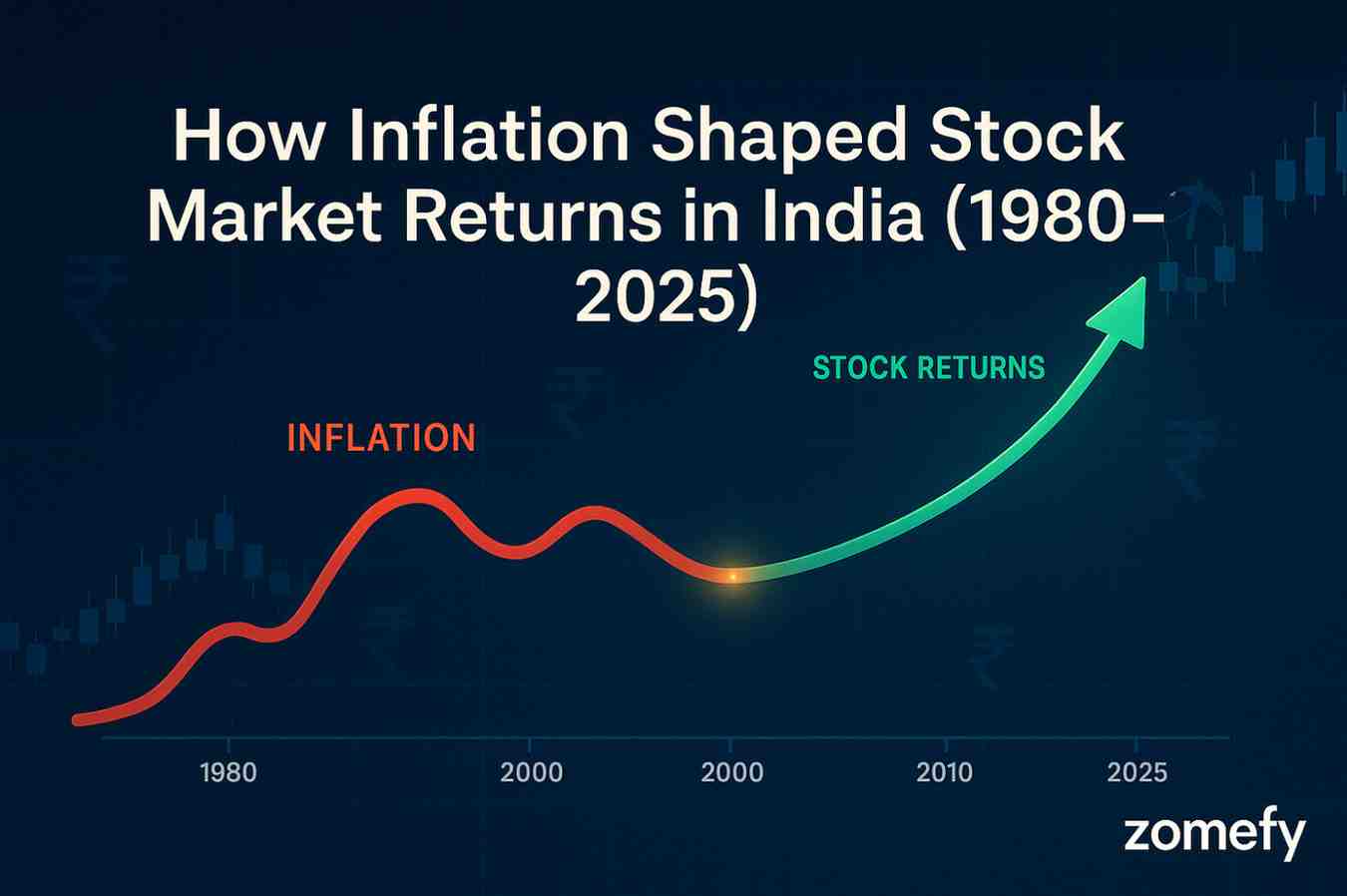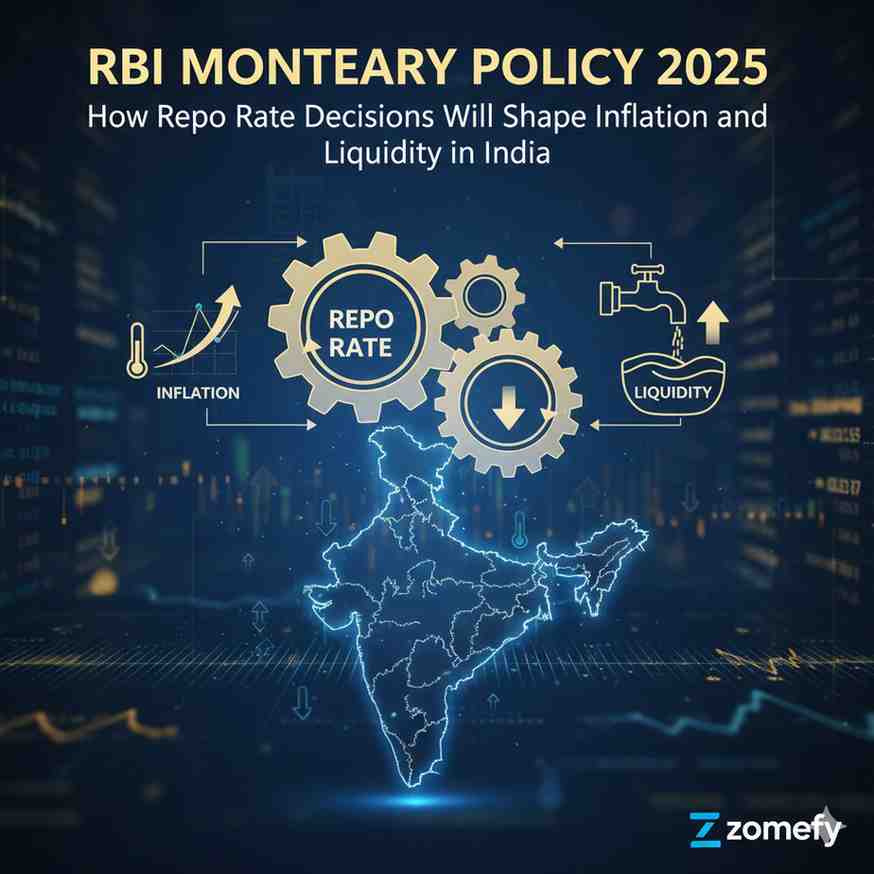AI Integration in Equity Research 2025: How 70% of Global Asset Managers Are Transforming Investment Analysis & What Indian Investors Need to Know
In 2025, artificial intelligence (AI) is reshaping equity research globally, with approximately 70% of asset managers adopting AI-driven tools to enhance investment analysis.
AI Integration in Equity Research 2025: How 70% of Global Asset Managers Are Transforming Investment Analysis & What Indian Investors Need to Know
What You Can Do Next
- Read the full article for complete insights
- Save for later reference
- Share with others learning about this topic
Image not available
In 2025, artificial intelligence (AI) is reshaping equity research globally, with approximately 70% of asset managers adopting AI-driven tools to enhance investment analysis. This surge in AI adoption is transforming how data is processed, earnings are forecasted, and market sentiment is gauged, enabling more precise and timely investment decisions. Indian investors and financial professionals stand at a critical juncture as domestic markets like NSE and BSE witness increasing integration of AI-powered analytics in stock research, portfolio management, and risk assessment. With India's regulatory environment evolving and companies embracing technology, understanding AI's role in equity research is essential for retail investors aiming to optimize returns and mitigate risks. This article explores the depth of AI integration in equity research, highlights trending Indian stocks influenced by AI insights, and provides actionable strategies tailored for the Indian market context.
AI Adoption in Global and Indian Equity Research: Current Landscape and Trends
By 2025, AI adoption has become a strategic necessity in equity research, with 70% of global asset managers leveraging AI for earnings forecasts, sentiment analysis, and screening, a figure expected to rise to 90% by 2027. This shift is driven by AI's ability to process vast datasets rapidly, improving forecast accuracy and uncovering investment opportunities that traditional methods may miss. For instance, AI-enabled natural language processing (NLP) tools analyze earnings call transcripts and social media sentiment to predict stock price movements with increasing precision. Indian markets are witnessing a parallel transformation, with domestic fund houses and brokerages incorporating AI-powered platforms tailored to NSE and BSE-listed companies. The Securities and Exchange Board of India (SEBI) is also facilitating innovation by encouraging digital disclosures and data transparency.
AI's impact is particularly visible in the rising use of quantamental research—blending quantitative AI models with human expertise—to navigate India's complex market dynamics. This approach helps identify undervalued stocks amid volatility and evolving sector trends. Retail investors can benefit by accessing AI-driven research reports and tools that were previously exclusive to institutional investors.
Metric | Global Asset Managers | Indian Asset Managers |
|---|---|---|
| Current AI Adoption Rate | 70% | Approx. 40-50% |
| Forecasted AI Adoption by 2027 | 90% | 70-75% |
| Common AI Use Cases | Earnings Forecasts, Sentiment Analysis, Screening | Portfolio Optimization, Risk Assessment, Market Sentiment |
| Regulatory Support | Global Data Policies | SEBI Digital Disclosure Norms, Data Standardization |
Actionable Insight:** Indian investors should familiarize themselves with AI-powered equity research platforms now gaining traction domestically, such as those offered by leading brokerages and fintech startups, to enhance their stock selection and portfolio management.
Quantamental Research: The Future of Indian Equity Analysis
Quantamental research combines AI algorithms with human expertise, creating a hybrid model that leverages the strengths of both. In India, this methodology is becoming vital due to the market's heterogeneity and regulatory nuances. AI models scan massive datasets—financial reports, macroeconomic indicators, sectoral data, and alternative data sources—while analysts interpret these signals within the Indian context, including regulatory shifts, corporate governance, and cultural factors.
Feature | Quantamental Approach | Traditional Equity Research |
|---|---|---|
| Data Processing | Automated, large-scale, real-time | Manual, limited scope |
| Sentiment Analysis | AI-driven NLP on earnings calls, news | Subjective analyst notes |
| Forecast Accuracy | Within ±8% error margin globally | ±15% error margin historically |
| Adaptability | Rapid integration of new data and scenarios | Slower update cycles |
For Indian investors, quantamental insights can help navigate sectors with recent regulatory changes, such as telecom and renewable energy, by providing timely, data-backed analysis. Investors should seek research products that disclose the AI methodologies used and emphasize transparency. This approach can improve confidence in investment decisions and portfolio resilience.
Case Study: AI-Driven Insights on Trending Indian Stocks in November 2025
Several Indian stocks have been in the spotlight recently due to earnings announcements, corporate actions, and regulatory updates, with AI-powered research playing a key role in interpreting these events. Below is an analysis of three trending NSE/BSE-listed companies where AI integration has enhanced the understanding of their fundamentals and price action.
Company | Market Cap (₹ Cr) | Recent News | AI-Driven Insight | Price Target (₹) |
|---|---|---|---|---|
| Reliance Industries | 15,45,230 | Q2 Earnings: Revenue ₹2,20,000 Cr; Jio partnership with global tech firm | AI models highlight strong digital revenue growth and synergy potential boosting long-term margins | 3,500 |
| Tata Motors | 2,15,670 | New EV launch; SEBI approval for buyback announced | Sentiment analysis indicates positive market reaction; risk from global chip shortage flagged | 565 |
| HDFC Bank | 8,20,450 | Dividend declared ₹18/share; robust asset quality reported | AI-enhanced risk models confirm low NPA trends and stable credit growth | 1,850 |
Investment Perspective:** - Reliance remains a core holding for growth-oriented portfolios, benefiting from AI-identified digital ecosystem expansion. - Tata Motors offers medium-term growth potential amid EV transition but requires monitoring of supply chain risks. - HDFC Bank is a defensive pick with stable fundamentals and dividend yield, supported by AI-verified credit quality.
Investors should use AI-powered platforms to track real-time earnings revisions and news sentiment for these stocks, enabling timely portfolio adjustments.
Deep Dive: Reliance Industries' AI-Enhanced Earnings Forecast
Reliance Industries’ Q2 2025 earnings reported ₹2,20,000 crore revenue with a net profit margin improvement driven by Jio’s digital services and retail segment growth. AI models analyzing earnings call transcripts and market data highlight the impact of the recent Jio global technology partnership, projecting a 12% revenue CAGR over the next three years.
Metric | Q2 FY2025 | Q2 FY2024 | YoY Growth (%) |
|---|---|---|---|
| Revenue (₹ Cr) | 2,20,000 | 1,95,000 | 12.8 |
| Net Profit (₹ Cr) | 15,500 | 13,200 | 17.4 |
| EBITDA Margin (%) | 15.5 | 14.2 | +1.3 pts |
AI-driven sentiment analysis also identifies improving investor confidence due to the company's digital ventures, suggesting a positive re-rating potential. The recommended price target of ₹3,500 is based on a forward P/E of 26x, factoring in earnings upgrades and sector tailwinds.
Actionable Insight:** Investors should monitor quarterly earnings and AI-generated sentiment scores to time entry or exit points effectively.
Implementing AI-Driven Equity Research Tools: Practical Guide for Indian Investors
For Indian retail investors and financial professionals, incorporating AI-driven equity research tools can significantly enhance investment decision-making. Key implementation steps include:
- Selecting AI-Enabled Platforms: Choose brokerage or fintech platforms offering AI-powered features such as earnings forecast visualization, sentiment dashboards, and automated screening for NSE/BSE stocks.
- Understanding AI Outputs: Learn to interpret AI-generated signals—such as buy/sell triggers, risk alerts, and scenario analysis—while considering qualitative factors unique to Indian markets.
- Integrating with Traditional Research: Combine AI insights with fundamental analysis, management quality assessment, and macroeconomic understanding for a comprehensive view.
- Risk Management: Use AI risk models to monitor portfolio exposure and stress-test against market shocks, especially critical given India’s sectoral cyclicality and regulatory changes.
AI Tool Feature | Benefit | Example Indian Platform |
|---|---|---|
| Earnings Forecast Automation | Faster, more accurate earnings estimates | Zerodha Sentinel, Tickertape AI Insights |
| Sentiment Analysis | Real-time market mood gauge | Moneycontrol AI Sentiment, ET Markets |
| Portfolio Risk Modelling | Dynamic risk exposure assessment | Smallcase Risk Analytics, Groww AI Tools |
Actionable Strategy:** Develop a disciplined approach by setting clear investment goals, using AI tools to screen and validate stock picks, and periodically reviewing portfolio performance with AI-generated reports. Continuous learning about AI capabilities and limitations is essential to avoid overreliance and to catch model biases or data inaccuracies.
Pros and Cons of AI in Indian Equity Research
Pros | Cons |
|---|---|
| Enhanced forecast accuracy and speed | Dependence on quality and availability of Indian data |
| Ability to analyze large and diverse data sets | Model biases and occasional inaccuracies (hallucinations) |
| Improved risk assessment and portfolio optimization | Regulatory and privacy concerns around data use |
| Accessibility of advanced tools to retail investors | Requires investor understanding and vigilance |
Indian regulators like SEBI are increasingly focusing on data privacy and algorithmic transparency, which will shape AI tool deployment. Investors should stay informed about compliance developments and choose platforms that adhere to Indian regulations.
Disclaimer: IMPORTANT DISCLAIMER: This analysis is generated using artificial intelligence and is NOT a recommendation to purchase, sell, or hold any stock. This analysis is for informational and educational purposes only. Past performance does not guarantee future results. Please consult with a qualified financial advisor before making any investment decisions. The author and platform are not responsible for any investment losses.
Continue Your Investment Journey
Discover more insights that match your interests

Top Mid Cap Mutual Funds 2025: Volatility & Return Analysis
Discover the top mid cap mutual funds for 2025 with detailed volatility and return analysis. Compare best performing mid cap funds with risk-adjusted returns and investment recommendations.

How Inflation Shaped Stock Market Returns in India (1980-2025) - Complete Analysis
Discover how inflation has impacted Indian stock market returns over 45 years. Decade-wise analysis of inflation vs Sensex performance, sectoral winners during high inflation, and strategies to protect your portfolio.

HDFC Bank Stock Analysis 2025: Q3 Earnings Beat & Credit Growth Momentum Amid Regulatory Clarity
HDFC Bank, India’s largest private sector lender, has once again grabbed headlines with its Q3 FY25 earnings, reporting a net profit of ₹16,736 crore—a 2.

RBI Monetary Policy 2025: How Repo Rate Decisions Will Shape Inflation and Liquidity in India
In October 2025, the Reserve Bank of India (RBI) maintained its key repo rate at 5.
Explore More Insights
Continue your financial education journey
